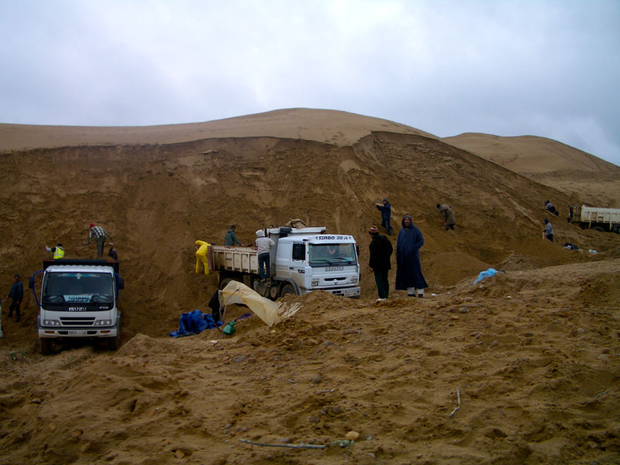
Beach sand mining. Photograph: © SAF — Coastal Care
Excerpts;
L’Entreprise publique économique (EPE) ORGM tente de fluidifier le marché du sable:
La pénurie de sable est une des principales causes de dépassements des délais d’exécution ont pu constater les constructeurs. La pénurie est si forte que le prix du mètre cube de sable a été multiplié par dix au cours de ces années de boom de la construction. Elle a donné naissance au pillage de sables des rivières et des plages, qui a causé de graves préjudices à l’environnement et à la qualité des constructions souvent réalisées avec du sable non conforme aux normes.
Translation:
Sand scarcity is one of the main cause of implementation deplays in the construction industry. The severity of the sand depletion is such that prices have gone up tenfold during this latest construction boom. The sand shortage has lead to the flourishing of illegal sand mining activities on river banks and beaches, that have caused serious environmental damages and have negatively impacted the quality of the buildings too often constructed with improperly treated sand…
Sand, Rarer Than One Thinks: A UNEP report (GEA-March 2014)
Despite the colossal quantities of sand and gravel being used, our increasing dependence on them and the significant impact that their extraction has on the environment, this issue has been mostly ignored by policy makers and remains largely unknown by the general public.
In March 2014 The United Nations released its first Report about sand mining. “Sand Wars” film documentary by Denis Delestrac – first broadcasted on the european Arte Channel, May 28th, 2013, where it became the highest rated documentary for 2013 – expressly inspired the United Nations Environment Programme (UNEP) to publish this 2014-Global Environmental Alert.









